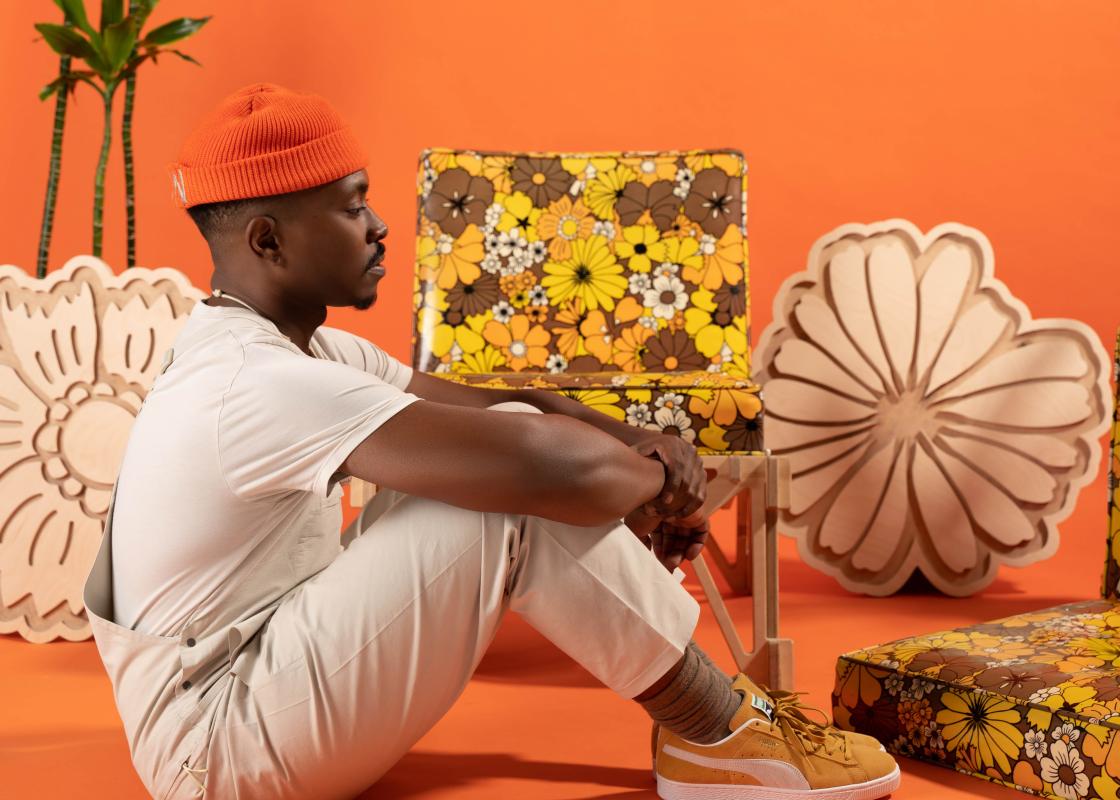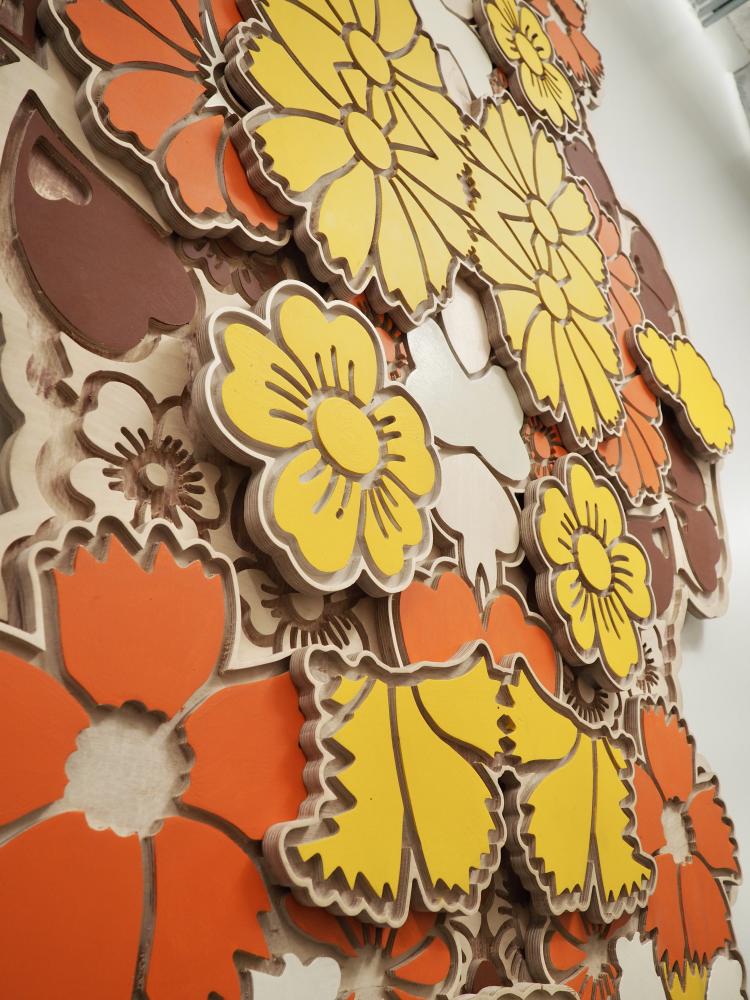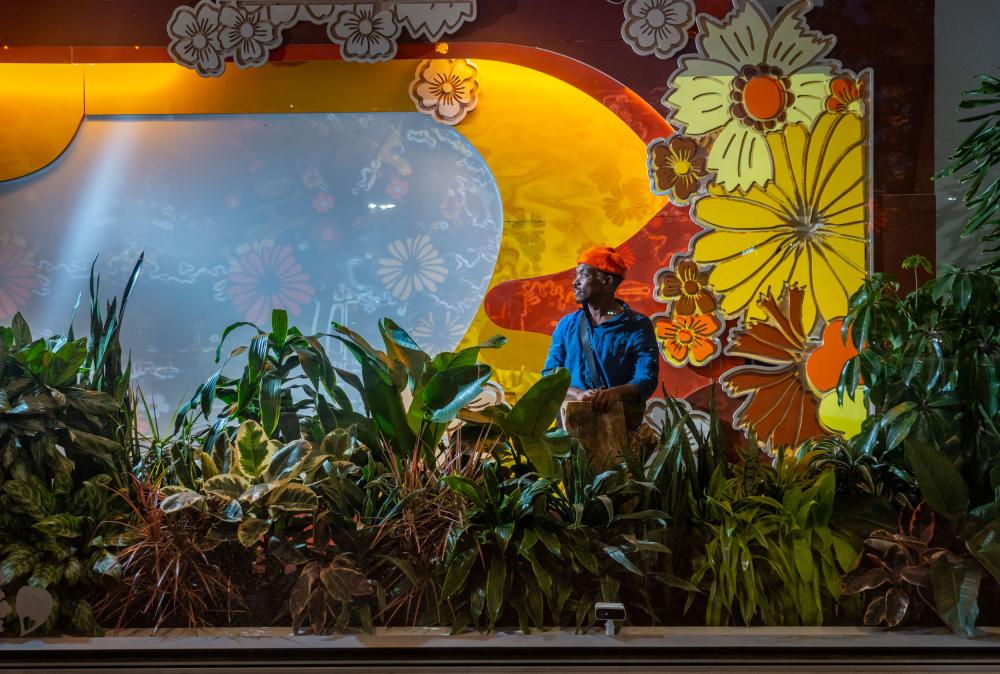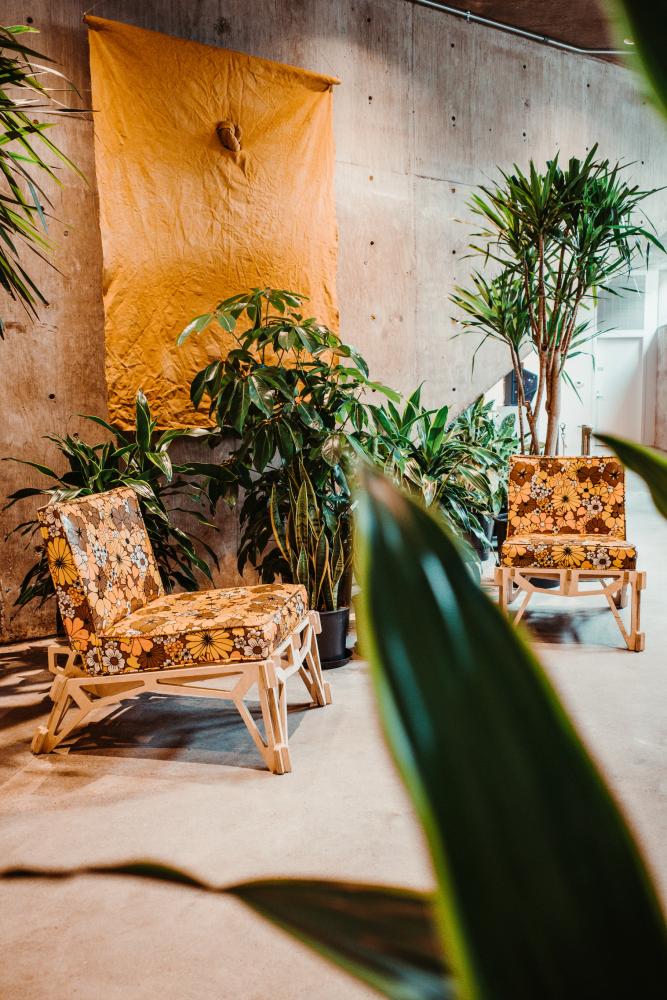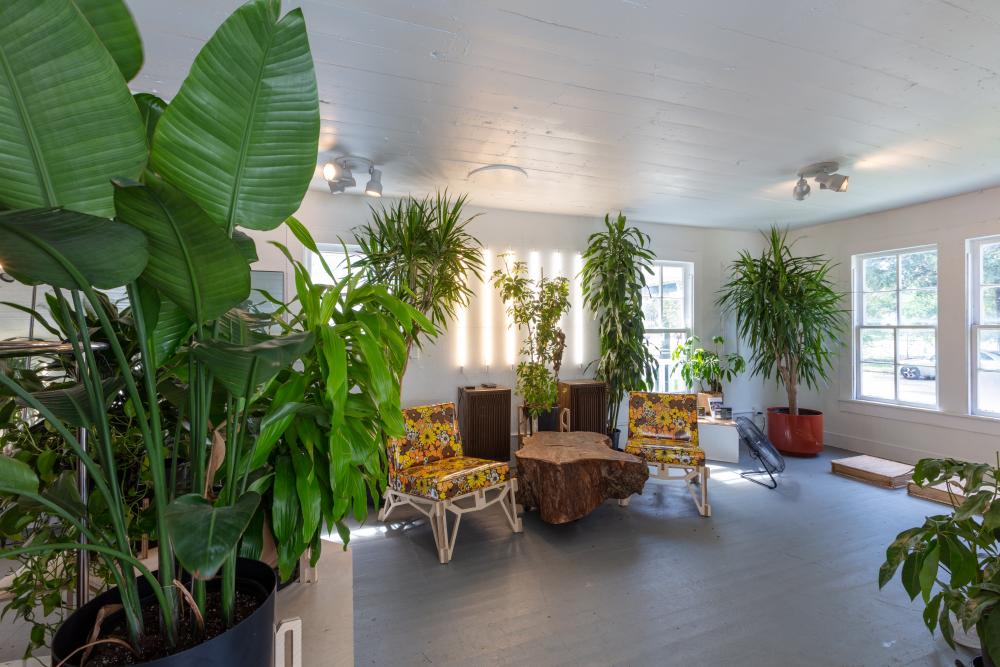Tell us about your work! What do you do? What are you passionate about?
Preston Gaines: I am an artist, architect, and biophilic/industrial designer, who is deeply invested in the legacy of Houston’s built environment and its inhabitants’ connections to the Earth and nature. My work raises questions about our collective experience and imagines radical possibilities for the future of design. I seek to manifest the hidden properties of nature through technology, with the intention of learning and reestablishing our connection to the archetypes of nature, art, and science. I have designed immersive light experiences, minimalist flat-pack furniture, Houston high-rise buildings, multi-sensory botanical installations, and have also hosted a number of community activations. I have felt a deep, personal affinity for geometry, plants, and the concept of harmony in all its forms, which has led me to begin my practice in pursuit of a better understanding of nature.
How (and why) did you start the design collective Inanimate Nature? Can you elaborate on the collective’s interest in nature?
PG: I created Inanimate Nature out of an interest in understanding human perception: how our minds interpret the world. Our work allows visitors to slow down and become conscious of the beauty of nature through biophilic design. Biophilia is defined as the inherent human inclination to affiliate with nature. Biophilic design incorporates natural materials, natural light, vegetation, nature views, and other experiences of the natural world into the modern built environment. Regardless of whether the work manifests as a discrete object, as in a painting, or an experience such as a large-scale installation, art’s transformative power engages our world in its connection to nature by protecting our legacy, educating our city, and healing us through a connection to one another. The idea is to establish a relationship between the viewer and the works of art as they originate from my own experience with the world. These interventions are not only important, but also necessary for the recovery, healing, and development in our community, especially at a time when many of us feel a sense of disconnection from one another.
What are you working on currently? Could you tell us about Fantasy Landscape installation that will be showcased in the Ion?
PG: I recently received my first artist residency with the Cynthia Woods Mitchell Center for the Arts at the University of Houston where I am also currently teaching in the Architecture Department. In order to bridge disciplines, stimulate dialogue, and support the creation of innovative work, the Mitchell Center supports a variety of programs including lectures and workshops, performances and exhibitions, and visiting artists such as myself. I also completed one of my largest interactive installations yet titled Fantasy Landscape, a multi-dimensional, immersive exhibit that falls somewhere between 1960s Pop Art and a botanical light landscape. It is a trippy amalgam of my design philosophies—not just a visual experience, but an all-encompassing one—providing visitors with a mind-bending, multisensory botanical journey.
Fantasy Landscape features interactive 3D digital simulations of various floral shapes and patterns that meld lush color fields with ever-evolving layers of abstract color and light. This combination of sensory stimuli forms an experience that is both meditative and dissociative, creating a space for our senses to explore the subjective nature of perception; it allows the visitors to visualize their relationship to and interactions with the world.
I consider the installation to be a natural extension to Houston's legacy of championing innovative technology, art, and environmental design—elements that are core to my own work. Located in the former Sears building in what was historically known as the Third Ward, the Ion sits at the heart of Houston’s history and culture. If we are to exist together as a community with integrity—our teachings must be in alignment with nature, technology, and with one another. This aspiration opens the visitor to a sense of connection and delight, which I hope, will rise above the fear of sensory overload. Fantasy Landscape provides a look into a hypothetical future; a new way of viewing objects and their roles in human life.
You graduated from Prairie View A&M with a degree in architecture. How did this education and prior work experience shape your ideas about what design is and what it can do?
PG: By juxtaposing an architectural approach often associated with urban life against the raw elements of nature, I produce work, which in turn has given me the opportunity to provide a universal entry into the natural world. Rather than making architecture my only interest and focus, I wanted to use my education and experience to explore all forms of creativity and design, opening up opportunities not only with well-established institutions such as the Contemporary Arts Museum Houston but also collaborations with some of the most reputable brands including Puma, Lululemon, and Nike. The late Virgil Abloh was an architect by trade, although he was consistent in his refusal to believe in disciplines. This allowed him to design any and everything he wanted. I feel that the limitations we set for ourselves in design and in life are only defined by the extent of our imagination.
Can you tell us about a transformative project that you’ve completed?
Le Fleur Lounge Chair, I would say, has definitely held influence throughout my work thus far. The first iteration was completed while I was still in college, but it continues to serve as a source of inspiration even to this day. With both in its depth and simplicity, the design reinforces the connection between man-made and natural elements through deconstructive, interactive, and innovative processes. I have continued to use the floral motif from the original vinyl chair design, so much so that it has become my signature.
What inspires you today?
PG: The works of many people from the deep past to the immediate present have impassioned my interest, including those of James Turrell, Nikola Tesla, Daniel Arsham, Virgil Abloh, Andy Warhol, Pythagoras, and Plato. I am also inspired by the artisans and architects of ancient Egypt, who knew how to make harmony visible.
Who is/was an important mentor for you?
PG: Janice Bond and Robert Hodge, who are major figures in Houston's art world. They gave me opportunities at the start of my career, which helped me understand the extent of my work and propelled me to further my career.
What is inspiring about doing your work in Houston? What is frustrating?
PG: For me, Houston provides inspiration in all forms. Houston is one of the largest cultural epicenters for designers and creatives. It is a collective of diverse and unique individuals exploring innovative ideas that question the future.
What are the key challenges and opportunities facing the city and region today? How does your work engage with these issues, if it does?
PG: The city and region face issues of environmental injustice and anthropocentrism that take place everywhere. A landscape is contextualized by its surroundings. It is a small instance of nature that evokes its own set of associations, analogies, desires, and questions.
My recent work titled Flora at Project Row Houses addresses these issues. Flora served to isolate and objectify the landscape beyond the anthropocentric narrative that has been set by the surrounding context.
A heightened psychological exploration of nature: when our eyes perceive nature's order, diversity, color, symmetry, and balance, we experience emotional and spiritual renewal that goes beyond the physical esthetic of nature. An exploration of mental and emotional effects that nature has over us.
What is one of your favorite places in Houston?
PG: James Turrell's Twilight Epiphany skyspace located on the Rice University campus.
Preston Gaines (b. 1990) is a Houston-based artist, architect, and designer whose work raises fundamental questions about our collective experience and imagines radical possibilities for the future of art. Gaines has his first solo exhibition opening on October 15th, 2022, at Barbara Davis Gallery.
This interview is a part of the New Design Talent series created by Jack Murphy, former Editor of Cite. It is intended to highlight emerging designers who are newer to the Houston area design community.


